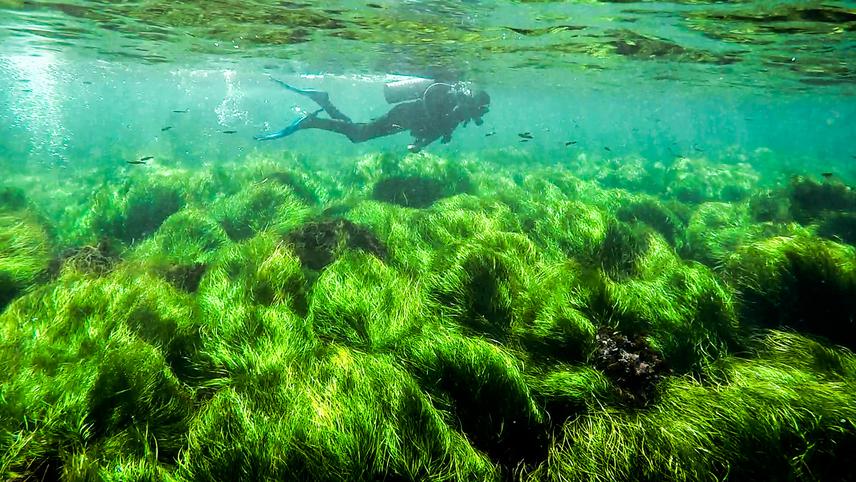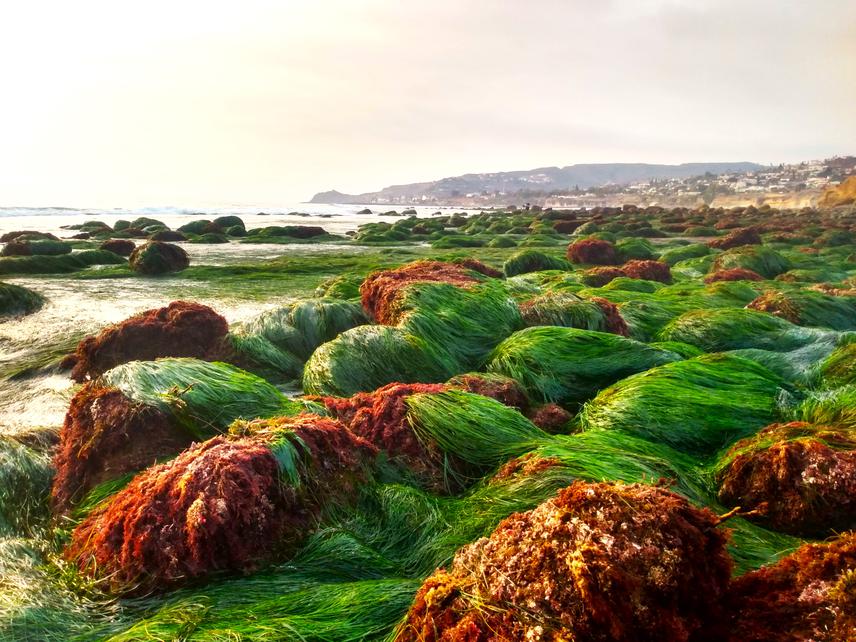Manuel Vivanco Bercovich
This project addresses the pressing impacts of climate change and local stressors on seagrass meadows, focusing on the iconic Phyllospadix species in Baja California, Mexico. While forming climax communities along the Pacific coast of North America, including within the Biosphere Reserve of Baja California Pacific Islands, these species confront intensifying threats from climate change and rapid coastal development.

The subtidal regions of surfgrass meadows are more extensive, stable, and dense, providing critical habitat for multiple species. ©Angela San Martin.
With substantial knowledge gaps hindering conservation efforts, our aim is to establish ecological observatories to monitor how these habitats respond to stressors associated with marine heatwaves, extreme weather events, and nutrient enrichment. By understanding their adaptive and acclimation capacities, we will develop a robust toolkit for supporting science-based decision-making. We aim to conserve these vital ecosystems in the face of increasing regional and local threats, ensuring their ecological integrity and the services they provide.

Surfgrass. ©Manuel Vivanco Bercovich (2021).
Our main aims include:
1. Monitoring Responses to Stressors: Establish ecological observatories along the Baja California peninsula to monitor seagrass meadows' responses to marine heatwaves, hurricanes, and nutrient enrichment. This includes tracking their ecophysiological and community-level responses.
2. Developing Conservation Tools: Utilize data from monitoring to create a toolkit that supports science-based decision-making for the conservation of seagrass meadows. This includes developing a multivariate index ("SURFMEX") for assessing coastal waters using surfgrasses as bioindicators.
3. Understanding Ecosystem Services: Investigate the ecosystem services provided by surfgrass meadows, such as carbon and nitrogen sequestration, and support for fisheries. This involves quantifying these services and understanding how they might be affected by climate change and local disturbances.
4. Raising Awareness and Informing Policy: Share findings through peer-reviewed journals, policy briefs, magazines, and social media to raise awareness about the importance of surfgrass meadows and inform conservation strategies. This includes publishing research articles on the vulnerability of surfgrass meadows and developing policy briefs to support management practices.
By accomplishing these aims, our project will provide valuable insights into the resilience of surfgrass meadows under various stressors, develop practical tools for their conservation, and enhance public and policy-maker awareness of their critical ecological roles.
Header: Taking notes. ©Jose Miguel Sandoval Gil (2019).